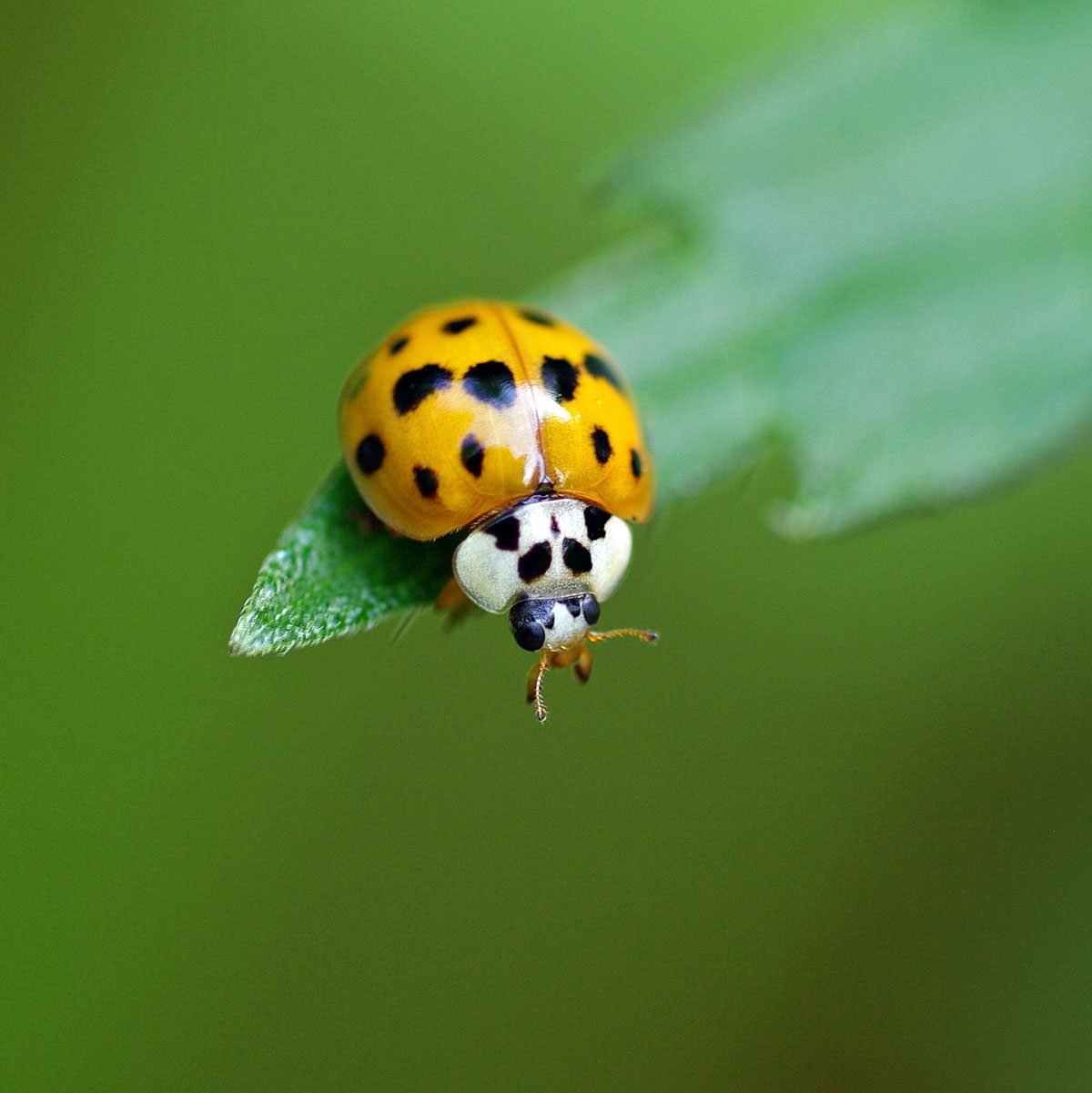- Get link
- X
- Other Apps
The multicolored Asian lady beetle is a common pest throughout Ontario and other parts of Canada. Asian lady beetles are a species of ladybug that overwinter meaning they hide inside homes and buildings during the winter to wait out cold weather.
 What Do Asian Lady Beetles Look Like Asian Lady Beetle Identification Guide
What Do Asian Lady Beetles Look Like Asian Lady Beetle Identification Guide
Harmonia axyridis most commonly known as the harlequin ladybird multicolored Asian Ladybeetle or Asian Lady Beetle is a large coccinellid beetle.

Japanese beetles ladybug. Lady bugs have a round oval shape while Asian lady beetles tend to be a little longer. But they eat other insects as well including native ladybugs. Asian Lady Beetles look almost identical to native ladybugs when it comes to color but theres one distinctive marking that will make it easy to spot the difference between the two.
Asian lady beetles have a distinctive highly-visible M-shaped black marking on their otherwise-white. Other ladybugs have a black head and if they have white marks they are not as large as the cheeks of the Asian lady beetle. This is one of the most variable species in the world with an exceptionally wide range of color forms.
Tired of wagging around vacuum and tossing bags like crazy. Asian lady beetles invade warm houses and buildings over the winter and will gather in groups on brightly-colored surfaces or windows. Well this is a simple Do It Yourself removal.
North America does have native ladybugs but the slightly bigger Asian lady beetle was imported to the United States in 1916 in hopes of keeping other insect pest populations down according to. Its scientific name Harmonia axyridis is a lot like lady beetles native to North America. Ladybugs called ladybirds in some countries are a family of beetles that includes the Asian Lady Beetle Harmonia axyridis among othersThe Asian lady beetle has large white cheeks and a black W or M depending upon how you look on its head.
Overwintering pests are not commonly seen during the winter as they will stay put in their hiding spots. Asian lady beetles also known as Japanese lady beetles harlequin ladybirds or Halloween bugs also eat aphids and other pests. They are similar though not identical in appearance and both are helpful in getting rid of aphids and other small garden pests.
A native of Asia this beneficial ladybug was imported in the early 1900s to help naturally control pest populations that were damaging such crops as alfalfa pecan and citrus trees. The easiest way to tell Asian lady beetles apart from ladybugs at a glance is to look for the white M see above. Tired of those pesky beetle things all over celing.
While theyre commonly called ladybugs Harmonia axyridis is actually a specific species within the lady beetle family native to Asia. Many people call these beetles ladybugs. The Multicolored Asian Lady BeetleHarmonia Axyridis now makes its home in the United States.
The multicolored Asian lady beetle is neither the lady bug native to Americanor is it the Japanese beetle. Its scientific name is Harmonia axyridis Pallas and it is from the large family of Coccinellidae beetles. Department of Agriculture attempted to.
 Ladybug Vs Asian Lady Beetle The Family Handyman
Ladybug Vs Asian Lady Beetle The Family Handyman
 How To Tell The Difference Between Good Ladybugs And Bad Ladybugs Better Homes Gardens
How To Tell The Difference Between Good Ladybugs And Bad Ladybugs Better Homes Gardens
/good-and-bad-ladybugs-2656236-v3-fe3e465282be4de686c08d2cf80defa8.png) How To Get Rid Of Asian Lady Beetles
How To Get Rid Of Asian Lady Beetles
 Asian Lady Beetle Infestation Of Structures Entomology
Asian Lady Beetle Infestation Of Structures Entomology
 13 Types Of Ladybugs With Pictures Including Asian Lady Beetle
13 Types Of Ladybugs With Pictures Including Asian Lady Beetle
 Asian Lady Beetle Infestation Of Structures Entomology
Asian Lady Beetle Infestation Of Structures Entomology
 Learn To Tell The Difference Between Ladybugs And Asian Lady Beetles
Learn To Tell The Difference Between Ladybugs And Asian Lady Beetles
 Ladybugs Or Lady Beetles What S The Difference Dave S Garden
Ladybugs Or Lady Beetles What S The Difference Dave S Garden
 What S The Difference Between Ladybugs And Asian Lady Beetles Plunkett S Pest Control
What S The Difference Between Ladybugs And Asian Lady Beetles Plunkett S Pest Control
 Multicolored Asian Lady Beetle Faq S All Your Questions Answered Horticulture And Home Pest News
Multicolored Asian Lady Beetle Faq S All Your Questions Answered Horticulture And Home Pest News
 Is This Asian Lady Beetle Meme True Ask An Entomologist
Is This Asian Lady Beetle Meme True Ask An Entomologist
 Japanese Beetle Vs Ladybug Why Does It Matter To Me Abc Blog
Japanese Beetle Vs Ladybug Why Does It Matter To Me Abc Blog
 Top 10 Natural Ways To Get Rid Of Ladybugs Aka Asian Lady Beetles Whole Lifestyle Nutrition Lady Beetle Asian Beetle Holistic Recipes
Top 10 Natural Ways To Get Rid Of Ladybugs Aka Asian Lady Beetles Whole Lifestyle Nutrition Lady Beetle Asian Beetle Holistic Recipes

Comments
Post a Comment